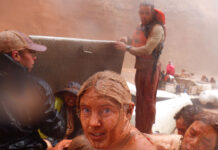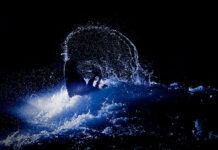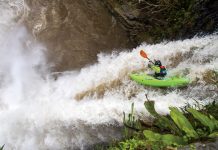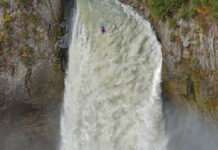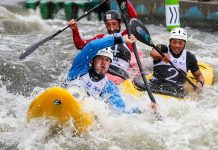When you ask whitewater kayakers what they love about the sport, you get hundreds of answers. It’s wild and fun, challenging, great exercise and a way to see hidden beautiful places. You feel more focused, alive, intense, happy. You make great friendships, and come back with an endless smile. The list goes on and on.
It sounds like kayaking should be the most popular sport in the world.
Except, it isn’t.
In fact, it’s a niche sport seen by most people as risky and dangerous.
Somehow, the love we have for it isn’t the message most non-paddlers receive. Why is that?
Consider my hometown, Missoula, Montana. The town enthusiastically embraces the outdoors: climbing, paragliding, skiing, hiking, backpacking, fishing, mountain biking and, well, you name it. There are 13,000 university students, five wilderness areas and two national parks, multiple rivers and lakes, and an artsy, literary, open city with six craft breweries, restaurants and a dozen different festivals.
It’s a kayaking town too, with whitewater runs close by, an artificial play wave in the middle of the city, and another due to be completed next year. It would seem to be a place where kayaking could hold its own. But it doesn’t.
There used to be four shops that sold whitewater kayaks. Two of them went out of business. One of them shifted to river surfboarding and standup paddleboarding. One stopped selling kayaking gear and put in a fly-fishing department. At present, there is only one small specialty whitewater shop left.
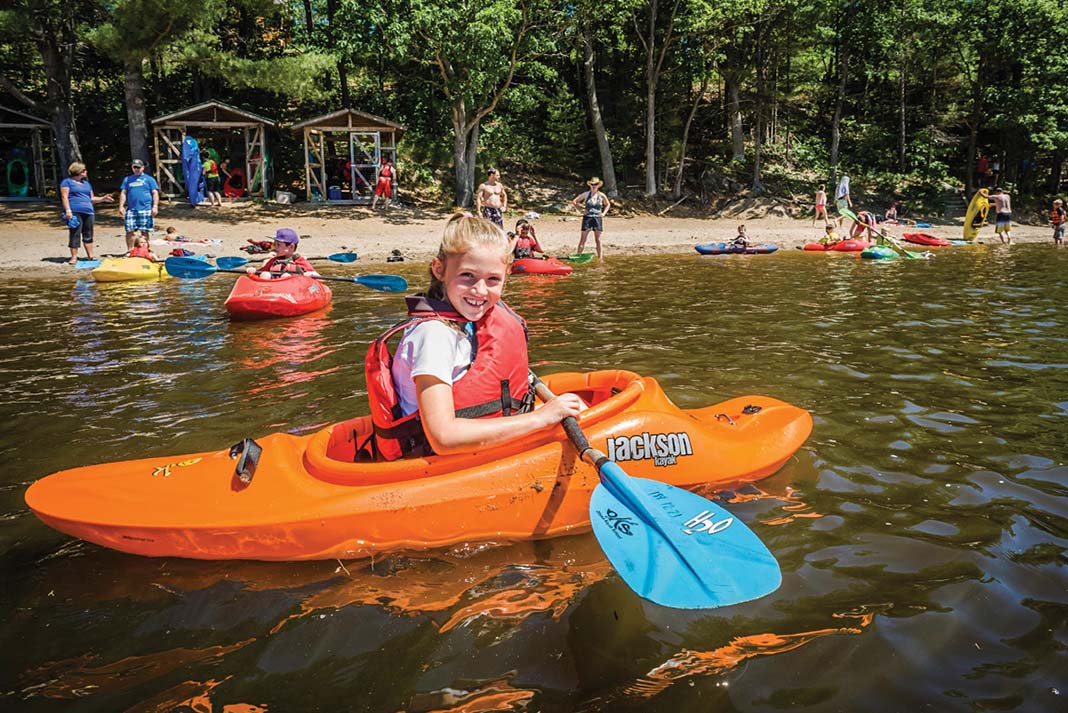
WHAT IS WHITEWATER MISSING?
In contrast, other sports are growing rapidly.
Take the Missoula Marathon, for example. In six years, it has grown from 200 entries to over 7,000. There are one-mile runs, half and full marathons. Participants are young and old, male and female, professional and recreational, people who started on a bet and everybody else under the sun. Four thousand participants are local, and the rest come from all 50 states and foreign countries. Everybody has a blast.
Take paddleboarding: It started a couple of years ago as a curiosity.
Now there are hundreds of people knocking around on the river. People working out, yoga classes in the eddy, boarding border collies, grandmothers sitting and dabbing paddles in the water, and kids playing in the shallows.
What do these sports have that whitewater kayaking doesn’t?
For one, these communities roll out the red carpet for beginners. Paddleboarders could be shown out in the open ocean, struggling in windswept waves with great white sharks circling them. Blood, sweat and tears could dominate marathon photos.
Instead, those sports are presented as welcoming, encouraging people at all levels. Beginners aren’t made to feel like loser newbies because status comes only by doing what is difficult.
People don’t fear running or paddleboards. In contrast, the fears beginners have about whitewater are wildly exaggerated, appropriate for class V but not for class I or II. They’re worried about being stuck inside a kayak, unable to breathe, slamming their heads on rocks. And instead of showing paddling in safe, fun ways on easy rivers, their fears are fanned by tough-guy attitudes, adrenaline rush chatter, and incessant photos of dangerous rapids.
Seven thousand people in Missoula find inspiration running on asphalt, in large part because they’re met with humility, family fun and open, encouraging attitudes. If we’re going to entice more people to kayak, we might start by showing them how fun, safe and accessible it can be, instead of how gnarly we are.
Otherwise, we’ll leave it to SUPs and surfboards, sit-on-tops, pack rafts, inflatables, touring boats, inner tubes and running shoes to take up the slack for thousands of people who might well love whitewater.
If we do this right, the list of what we love about the sport will grow longer with every new beginner.
Doug Ammons has kayaked for nearly 50 years. He is married with five children, has a PhD, and was named by Outside magazine as “one of the top 10 game changers in adventure since 1900” for his 1992 solo of the Grand Canyon of the Stikine.
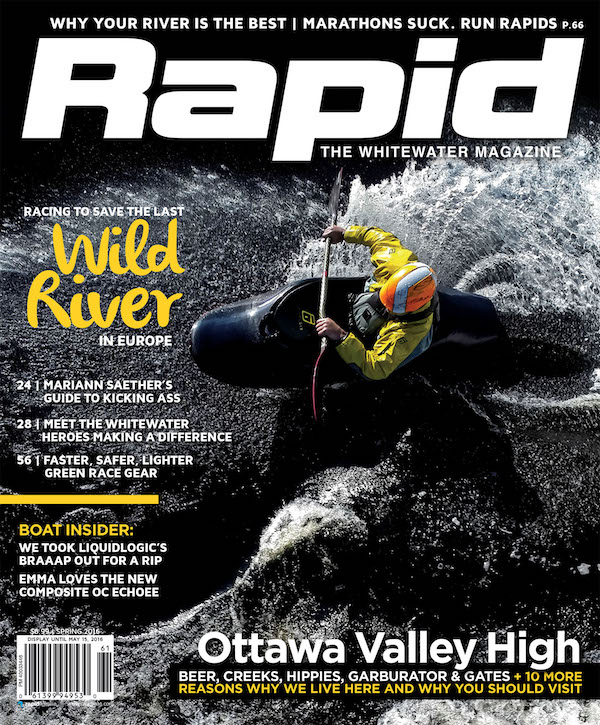 This article originally appeared in Rapid Spring 2016 issue.
This article originally appeared in Rapid Spring 2016 issue.
Subscribe to Paddling Magazine and get 25 years of digital magazine archives including our legacy titles: Rapid, Adventure Kayak and Canoeroots.



